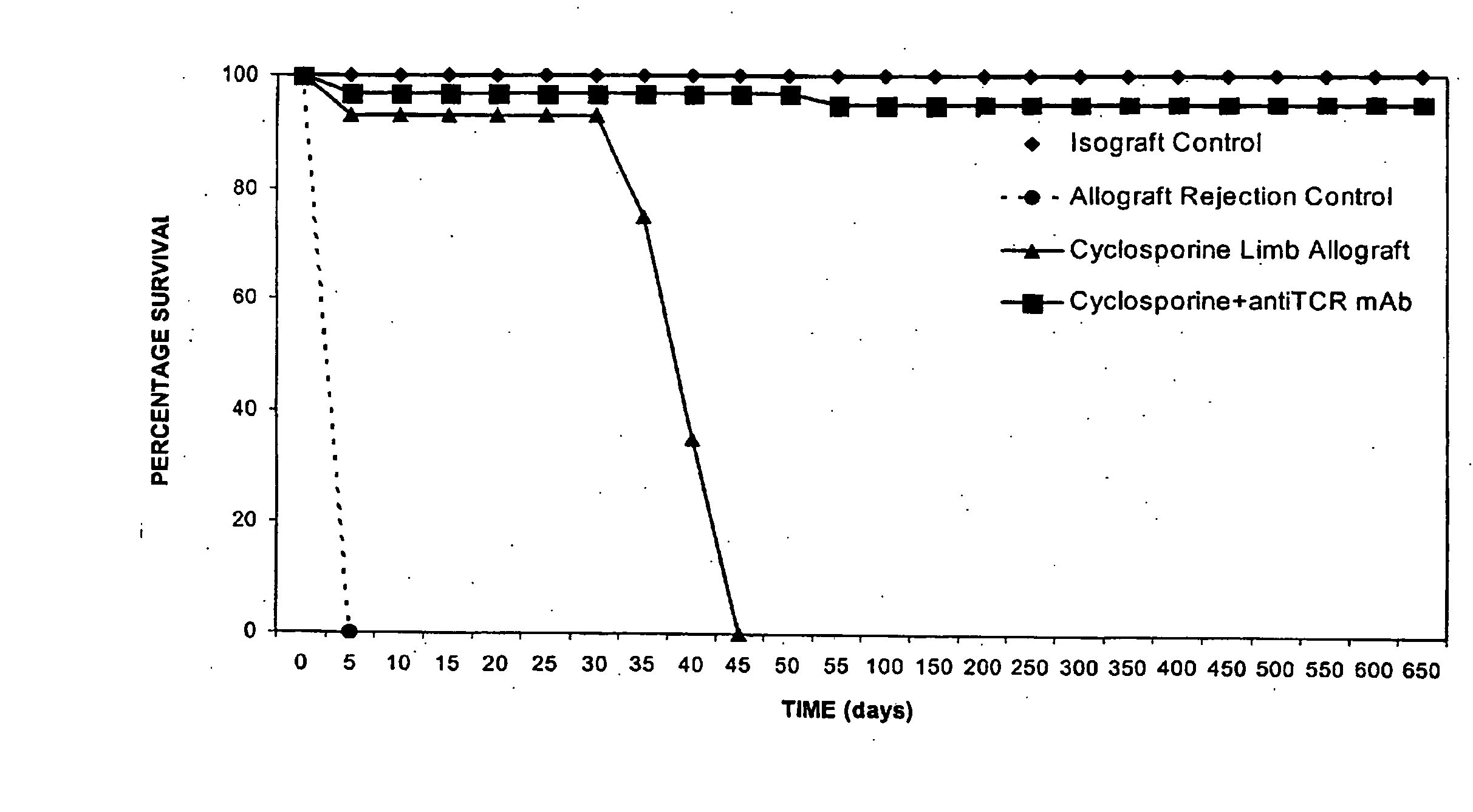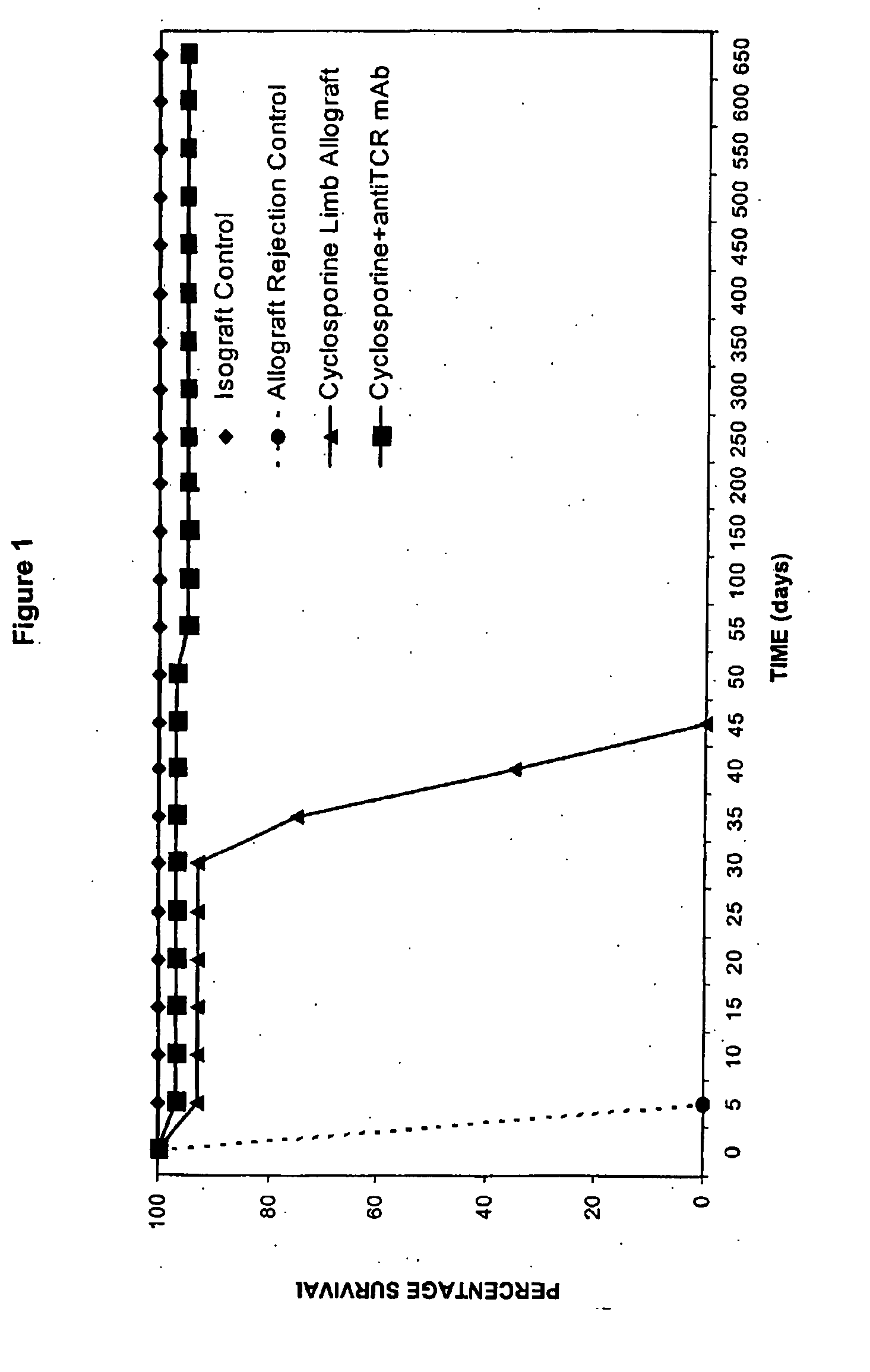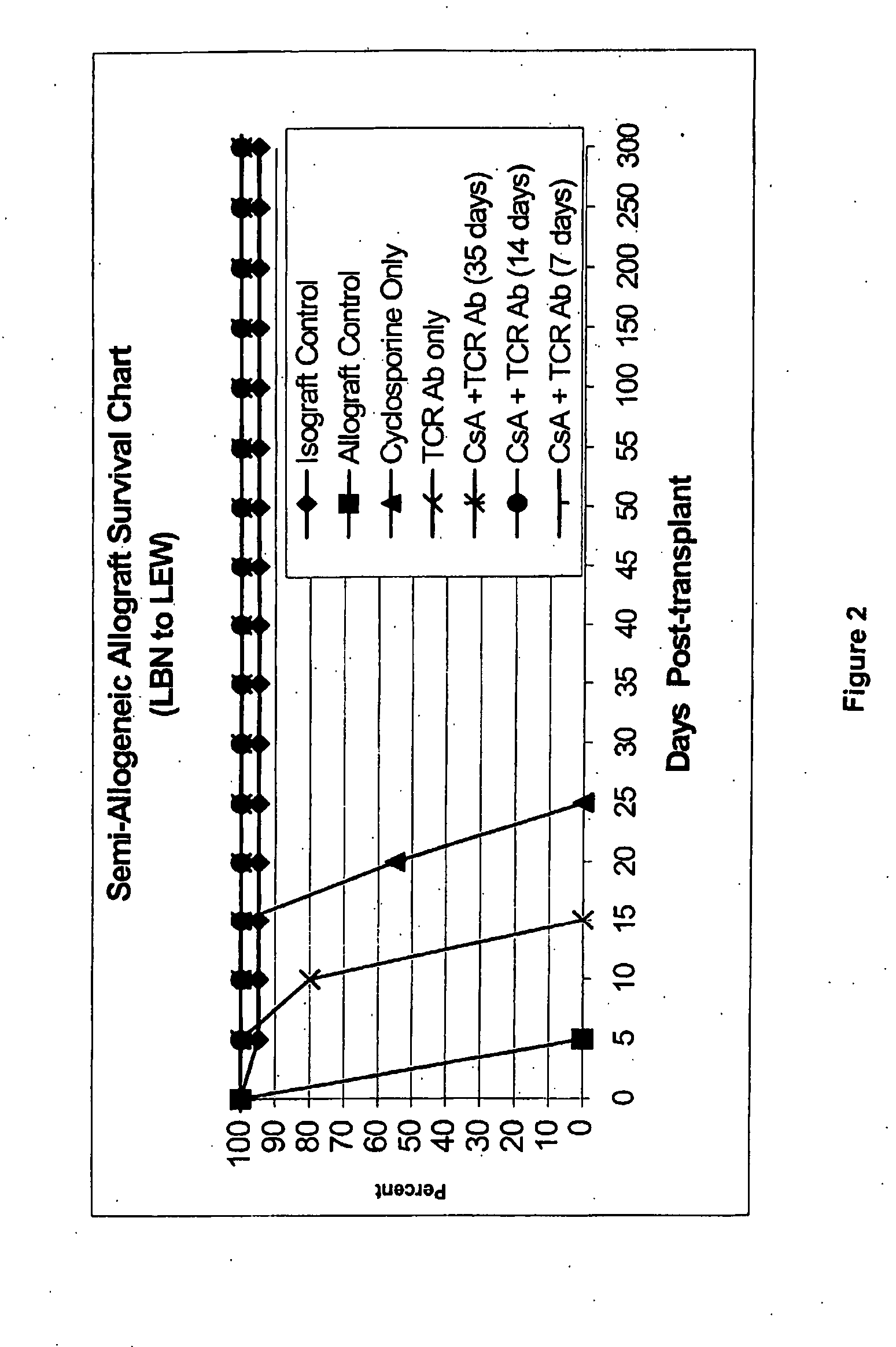Induction And Maintenance Of Tolerance To Composite Tissue Allografts
a composite tissue and allograft technology, applied in the field of clinical organ transplantation, can solve the problems of long immunosuppressive drugs and carries a significant risk of infectious and neoplastic complications, and achieve the effect of stable hematopoietics
- Summary
- Abstract
- Description
- Claims
- Application Information
AI Technical Summary
Benefits of technology
Problems solved by technology
Method used
Image
Examples
example 1
Survival of Hindlimb Allografts Under Combined CsA / αβ-TCR mAb Treatment Protocols
[0113]FIG. 1 illustrates the transplant survival time in the semi-allogeneic allograft and isograft controls and in experimental groups after immunosuppressive treatment under the 35-day treatment protocol. Isograft controls survived indefinitely. Allograft rejection controls rejected limbs at between days 5 and 7 post-transplantation. In the CsA-alone group, limb rejection occurred between 7 and 14 days after cessation of the 35-day treatment. Under combined CsA / αβ-TCR mAb treatment for 35 days, all limb allografts survived over 650 days, and have continued to survive over 720 days, without signs of rejection.
[0114]FIG. 2 illustrates the limb allograft survival curve under different treatment protocols, indicating indefinite survival (>300 days) of the semi-allogeneic allografts under the CsA / αβ-TCR mAb treatment protocol for 35 days, 14 days and 7-days only.
[0115]FIG. 3 illustrates hematoxylin and ...
example 2
Microcirculatory Hemodynamics and Microvascular Permeability Index of Hindlimb Allografts Under Combined CsA / αβ-TCR mAb 35-Day Treatment are Comparable to Isograft Controls
[0116]FIG. 4 illustrates intravital microscopy images (×1800) of microvessels in control and transplanted muscles at day 7 post-transplantation. Top images (FIG. 4, A-D) show leukocyte-endothelial interactions—rolling, adherent, and transmigrated polymorphonuclear neutrophils (PMNs) in posteapillary venules (40 μm) Arrowheads show the external, and small arrows the internal venular diameter. The ratio is the endothelial edema index (EEI), indicating vascular occlusion. Below are corresponding images after FITC albumin injection to reveal vessel permeability index (PI) (FIG. 4, A1-D1). Control cremaster muscles with normal venular diameter, normal EEI, and normal PI (FIG. 4, A and A1). FIG. 4, B and B1 illustrate the isograft control, with a 30% increase in rolling PMNs, a 60% increase in adherent PMNs, a 10% elev...
example 3
Assessment of Functional Return
[0117] At 6 weeks post-transplantation, the pin-prick test revealed grade 3, full return of sensation, in all allograft recipients under combined CsA / αβ-TCR mAb 35-day treatment protocol. The animals had a normal sensation up to 720 days post-transplantation and use of their limbs as support. No toe-spread return was seen (grade 0), so walking-track analysis was inconclusive because of toe contracture.
PUM
| Property | Measurement | Unit |
|---|---|---|
| time | aaaaa | aaaaa |
| time | aaaaa | aaaaa |
| time | aaaaa | aaaaa |
Abstract
Description
Claims
Application Information
 Login to View More
Login to View More - R&D
- Intellectual Property
- Life Sciences
- Materials
- Tech Scout
- Unparalleled Data Quality
- Higher Quality Content
- 60% Fewer Hallucinations
Browse by: Latest US Patents, China's latest patents, Technical Efficacy Thesaurus, Application Domain, Technology Topic, Popular Technical Reports.
© 2025 PatSnap. All rights reserved.Legal|Privacy policy|Modern Slavery Act Transparency Statement|Sitemap|About US| Contact US: help@patsnap.com



